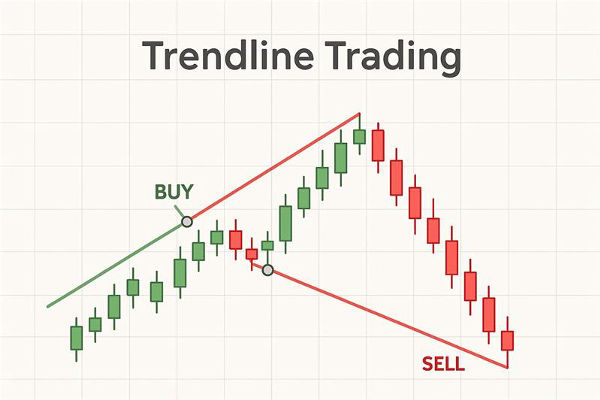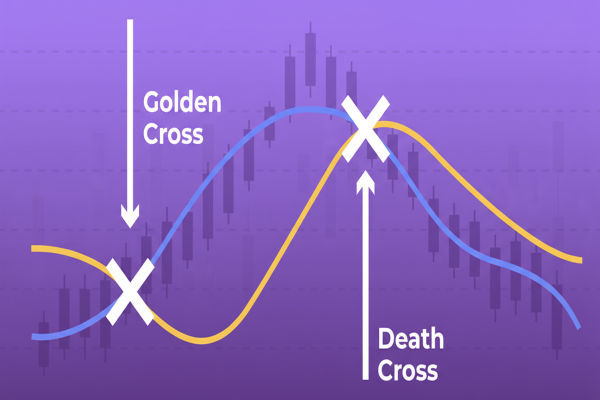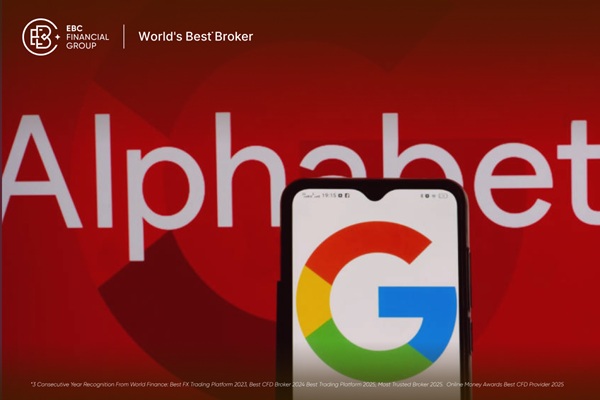Can you short crypto for speculation and hedging during wild markets? Absolutely, and volatility is often where opportunity lives. Crypto markets are famous for large swings in short periods compared with most stock indices or government bonds. Across cycles, bitcoin’s average daily move has often been several percent, while many altcoins can move two or three times as much on heavy news days. For disciplined traders, that volatility can be harnessed either to speculate or to protect a portfolio.
There are two main reasons traders short crypto. The first is speculation when markets look overheated. During episodes such as the 2017 initial coin offering bubble or the 2021 meme coin frenzy, prices ran far ahead of fundamentals and then retraced sharply. Short exposure can monetise that move lower. The second is hedging. Long term investors who believe in bitcoin or ether may still want protection during downturns. By shorting an equivalent exposure through futures or options, they can offset part of the drawdown without selling their core holdings or triggering tax events.

Step by Step: How to Short Crypto in Practice
Can you short crypto consistently with a repeatable process? Yes, if you break it into clear stages.
Choose a platform: Decide whether a crypto exchange, a multi asset broker, or a listed product provider suits your jurisdiction and regulations. Some traders prefer exchange based derivatives because they offer deep liquidity. Others prefer listed inverse funds because they sit inside a traditional brokerage account.
Fund your account: Deposit fiat or crypto to serve as collateral. Understand what counts as initial margin, what is considered maintenance margin, and how your provider determines a margin call.
Select your method: Pick margin, futures, options, CFDs, or inverse funds based on your knowledge and objective. If you want defined risk, consider buying puts. If you want direct sensitivity, futures or margin shorts offer linear exposure.
Set trade parameters: Define entry, position size, maximum leverage, stop distance, and profit target. Write them down. If you are using leverage, decide the maximum drawdown you will tolerate before cutting the position.
Risk management: Place stop loss orders, choose sensible leverage, and cap your risk per trade as a percentage of account equity. Many disciplined traders keep risk per trade in the range of 1 to 2 percent, which allows a string of losses without knocking them out of the game.
Monitor and exit: Watch liquidity conditions, spreads, and funding rates. Exit by target, by time stop, or by trailing stop, rather than improvising under stress. If using options, understand time decay and how implied volatility affects your option price.
Example: You short one bitcoin at 30,000 dollars using a perpetual futures contract. Price falls to 28,000 dollars. Your unrealised gain is 2,000 dollars before fees and funding. If instead price rises to 32,000 dollars and you are using ten times leverage, your account could be liquidated because the loss relative to your collateral becomes too large.
Methods to Short Crypto, Deep Dive
Margin Trading
Can you short crypto directly on spot venues with borrowing? Margin trading is one of the most direct ways to short crypto. On major exchanges that offer lending, traders can borrow coins from a pooled facility and sell them short in the spot market. The workflow is familiar. You borrow the asset, you sell it, you later buy it back, and you repay the loan plus interest. The exchange takes care of the mechanics under the hood, including loan sourcing and repayment, while you focus on timing and risk.
How it works in practice: You borrow one bitcoin at 30,000 dollars and sell it. If price declines to 28,000 dollars, you buy it back and return it. Your gross profit is 2,000 dollars minus interest on the borrowed asset and trading fees. If the price rises instead, your account must hold enough collateral to cover the loss or you risk liquidation. Exchanges display a liquidation threshold so you can see the danger zone.
Where it shines and where it bites: Margin shorting is straightforward, liquid on large pairs, and accessible to experienced retail traders. It does not require a deep knowledge of derivatives pricing. The trade off is interest on borrowed assets, variability in borrow availability, and liquidation risk if price moves sharply against you. Because leverage magnifies both gains and losses, a move of ten percent against a highly leveraged account can wipe out the margin completely.
Futures Contracts
Can you short crypto without borrowing inventory? Yes, with futures. Crypto futures allow you to take a short position without borrowing the underlying asset. You enter a contract that increases in value as the underlying price falls. Contracts can be dated with a fixed expiry or perpetual with no expiry. Perpetuals use a funding mechanism to keep the contract price aligned with the spot market.
How it works in practice: You short one bitcoin perpetual futures contract at 30,000 dollars. If bitcoin trades down to 28,000 dollars, your contract shows a 2,000 dollar gain before fees and funding. If the market rises instead, your unrealised loss grows and your margin is tested. On perpetuals, you also pay or receive a funding fee periodically, depending on whether shorts or longs are dominant in the market.
Why traders like futures: They are widely available and very liquid on the largest coins. They provide leverage without borrowing inventory and allow precise position sizing. Institutions that prefer regulated venues can use listed futures on established exchanges in certain jurisdictions.
Options Trading
Can you short crypto with defined risk? Options give you that flexibility. Options give you the right, but not the obligation, to buy or sell an asset at a specific price before a set date. If you expect prices to fall, you can buy puts, or you can construct defined risk spreads. Options are particularly attractive if you want to cap your maximum loss at the premium paid.
How it works in practice: You buy a put on ether with a strike at 1,800 dollars and an expiry one month out. If ether falls below 1,800 dollars before expiry, the put gains value and you can sell it for a profit or exercise it, depending on the market structure. Your risk is limited to the premium you paid for the option.
Why traders choose options: They deliver asymmetry. If you are wrong, you lose the premium and nothing more. If you are right and the market sells off hard, your downside capture can be significant. Options can also be used to hedge long spot holdings while preserving upside potential.
Inverse ETFs and ETPs
Can you short crypto through traditional brokerage accounts? In some regions, yes. Inverse exchange traded funds and exchange traded products provide short exposure without derivatives accounts. You buy the fund, and it rises when the reference crypto price falls. In some markets there are listed products that track the inverse of bitcoin or other large coins. These are appealing to investors who prefer traditional brokerage channels and a familiar settlement framework.
How it works in practice: Instead of shorting bitcoin directly, you buy an inverse product that targets minus one times the daily return of bitcoin. If bitcoin falls by three percent on a given day, the fund aims to rise by roughly three percent before fees and tracking noise. You can hold the product in a standard brokerage account and avoid posting crypto collateral.
Why investors like them: They are regulated products in the jurisdictions that list them, they slot into existing account infrastructure, and they avoid margin borrowing or futures mechanics. For some portfolios, that simplicity and oversight are worth the management fee.
CFDs, Contracts for Difference
Can you short crypto quickly on a multi asset platform? CFDs make that possible in many countries. Contracts for difference are synthetic instruments that pay the difference between the entry and exit price of the reference asset. They are common with multi asset brokers in Europe, Asia, and Australia, and they allow you to short without owning or borrowing crypto.
How it works in practice: You open a CFD short on bitcoin at 30,000 dollars. If price falls to 28,000 dollars, your contract pays the 2,000 dollar difference per unit, less costs. Because CFDs are over the counter, your experience depends heavily on the broker’s pricing and execution quality.
Why traders use CFDs: The interface is simple, there is usually no expiry, and you can manage positions alongside forex, indices, and commodities from one account. For traders outside the United States, CFDs can be a convenient way to implement a short view without juggling multiple venues.
Case Studies, Three Deep Dives
Case Study 1, Bitcoin Crash of March 2020
When the pandemic triggered global panic in March 2020, bitcoin fell from the 9,000 dollar area to below 4,000 dollars in a matter of days. Traders who were short through futures saw dramatic gains as risk assets sold off, correlations spiked, and liquidity thinned across markets. The move happened so fast that intraday swings were measured in thousands of dollars per coin.
The period exposed the danger of leverage. Many traders who used aggressive leverage were liquidated before the full fall played out. Prices gapped through stops as liquidity evaporated and spreads widened. Some platforms experienced delays and protective circuit behaviour. The irony was stark. Traders with modest size and conservative leverage survived and profited. Traders with large size and high leverage saw positions closed automatically even though the broader direction later validated the short thesis.
Case Study 2, Terra LUNA Collapse in 2022
In early May 2022, the algorithmic stablecoin ecosystem around Terra unraveled. LUNA traded above 80 dollars before collapsing to fractions of a cent. Traders who shorted perpetual futures or who bought puts before liquidity vanished made large profits relative to risk. The structural weakness of the system became evident as confidence cracked and redemptions surged.
The move, however, was not a straight line. There were violent bounces as hopeful buyers stepped in and as short covering pushed price upward temporarily. Many highly leveraged shorts were liquidated on these reflex rallies, only to watch the token fall further afterwards. Traders who set profit targets and moved stops down methodically captured more of the sustained move than those who chased every tick.
Case Study 3, Ethereum Merge in 2022
Leading into the Ethereum Merge, ether rallied strongly as the market anticipated a successful transition. After the event, price sold off as some traders sold the news. Short sellers who waited for the rally to exhaust and who then used futures or puts captured a clean downward swing over the following sessions.
Timing mattered. Traders who entered early faced squeezes as optimism grew and as funding favoured longs. Those who waited for confirmation, such as a break of a support zone or a failure at a moving average, enjoyed a higher probability entry with tighter risk. Options buyers who chose expiries that extended beyond the event avoided extreme time decay around the date itself.

Shorting vs Going Long, Which Is Better?
Can you short crypto and also hold long term investments? Many traders do both. Going long aligns with the long term story of crypto adoption. Over multi year windows bitcoin and ether have trended higher despite periodic crashes. Longs can benefit from staking yields or ecosystem growth, depending on the asset.
Shorting is a tactical tool. It is most effective during overheated conditions and in the aftermath of narrative exhaustion. Professional traders often blend both approaches, holding core long exposure for secular growth while using shorts to monetise corrections or to protect the portfolio during risk events.
A blended approach requires clean separation of capital. Tag long positions and short trades separately in your journal. Define distinct rules for each so you do not turn a failed short into an accidental long or vice versa.
FAQs About Shorting Crypto
Q1. Can you short crypto without leverage?
Yes. You can buy inverse exchange traded products where available or use long dated put options. Both provide short exposure without borrowing and with risk capped at the premium or product value.
Q2. What is the safest way to short crypto?
Buying puts is the most defined risk approach because your maximum loss is the option premium. Inverse listed products within a brokerage account can also be suitable for some investors, subject to understanding the daily reset effect.
Q3. Can beginners short crypto?
Yes, but start small, use low or no leverage, and practise on a demo environment. Focus on execution basics and risk control before scaling size.
Conclusion
Can you short crypto effectively in volatile markets? Yes, but it is never trivial. It demands the right instrument, the right sizing, and a sober respect for liquidity and funding. As bitcoin, ether, and altcoins continue to swing, short exposure gives you a way to profit from downturns or to protect long term holdings without abandoning your core beliefs.
The key insight is simple. Shorting is not about predicting collapse. It is about using volatility to your advantage with a plan. Done carefully, it can balance a portfolio and open new opportunities. Done recklessly, it can erase months of progress in a single session. Start small, choose your method deliberately, and let risk management do the heavy lifting.
Disclaimer: This material is for general information purposes only and is not intended as, and should not be considered to be, financial, investment or other advice on which reliance should be placed. No opinion given in the material constitutes a recommendation that any particular investment, security, transaction, or investment strategy is suitable for any specific person.























